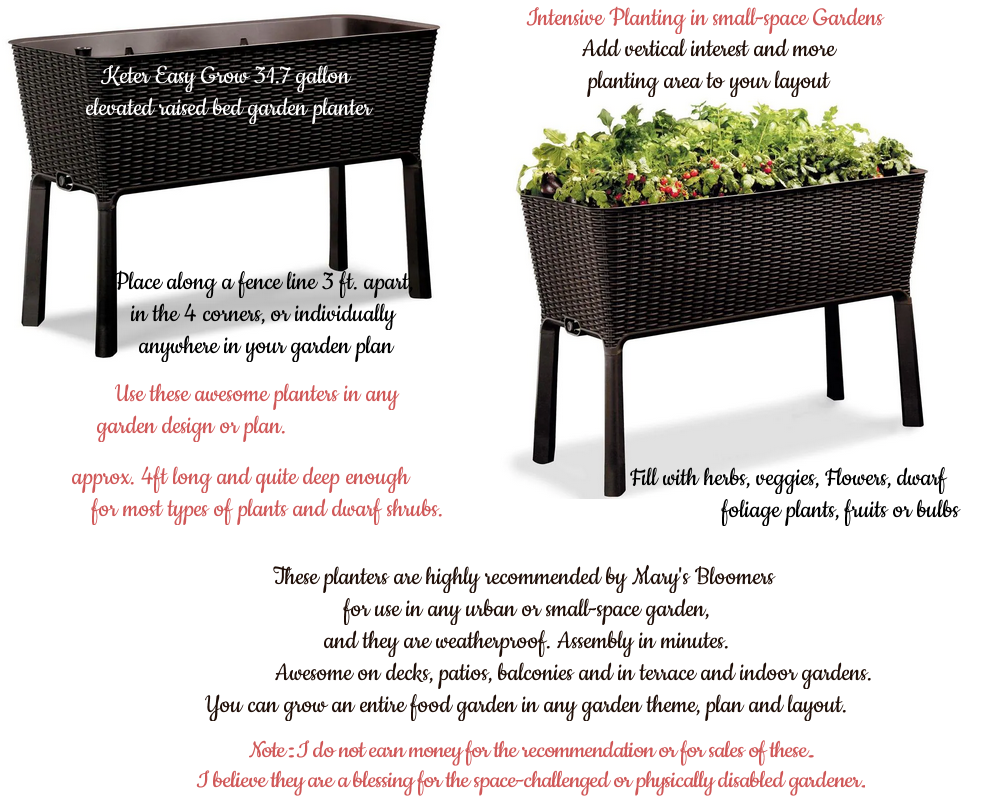|
Urban Farmer and Small Space Gardening Growing Your Food in Raised Garden Beds and Containers
Raised bed garden beds and
containers are a great
way to grow fresh edibles with limited space. Elevated garden beds are
excellent for small yards with poor or compacted soil. You can grow
several raised vegetable groupings by growing above-ground, and growing
up, instead of out. The types of gardens I grow in raised beds are usually themed, and companion plantings are used, so that I can grow other fruits or veggies, herbs and spots of flowers within a grouping. Adding a flowering plant adds pollinators, and in a food garden, you want as many bees, birds and butterflies as you can attract. Pollination is the secret to prolific ornamental plants and edibles. I grow a raised bed just to cater to Monarch butterflies. They're endangered, so i want to grow a garden box filled with butterfly weed and milkweed to keep the butterflies coming. Milkweed is essential to the survival of the Monarch and the only plant the caterpillars will eat. If you're lucky, you'll attract Monarchs that have been tagged to keep track of them on their migration to Mexico in fall. The raised beds keep the butterfly plants from spreading throughout the garden, and the elevated type is the right height for watching and photographing. Raised garden bed plans and kits come in different styles and sizes. These are great for growing herbs and your own ingredients for salsa or salad. Once you’ve mastered the gardening technique, you can make a raised garden bed to plant crowds of seasonal flowers to add color to your landscape. Kits are available in a range of sizes and materials. Most types of garden beds are the open-bottom variety that are placed directly on the ground. Some elevated raised garden beds are assembled on legs. These are great for small patios or decks and require even less bending or squatting to tend to the plants.
While wooden beds are available in kits, learning how to build a raised garden bed is a straightforward project suitable for those with some experience using common tools. For a simple raised garden bed:
Safety: Using pressure-treated lumber is an option. Today’s pressure-treated wood is designated safe to use around people, pets, plants and vegetables. If you are concerned about using treated wood, line the interior walls of the garden bed with sheet plastic before adding soil.
Landscape Fabric Protect against pests by lining
the bottom of the bed with weed block, builder's paper or landscape
fabric. This barrier between the soil in
the bed and the soil in your yard helps keep weeds and grass from
growing in the bed from below. At the same time, it is porous and will
allow water to pass through for proper drainage. Keep the weed barrier in place with landscape fabric pegs fastened around the interior edge of the raised garden bed. Adding Soil The elevated garden beds i use are shown below. They are pre-made and all you have to do is snap in the legs, fill the planter, and get planting. All in 10 minutes!
For directions on how to build your own garden bed, click here for instructions from Lowe's. How to Build a Raised Garden Bed - Instructions from Farmer's Almanac How to build Cedar Raised Garden Beds - from HGTV Pre-made Raised and Elevated Garden Beds
Sources:
Design, graphics,
articles and
photos ©2022 marysbloomers.com™ |
